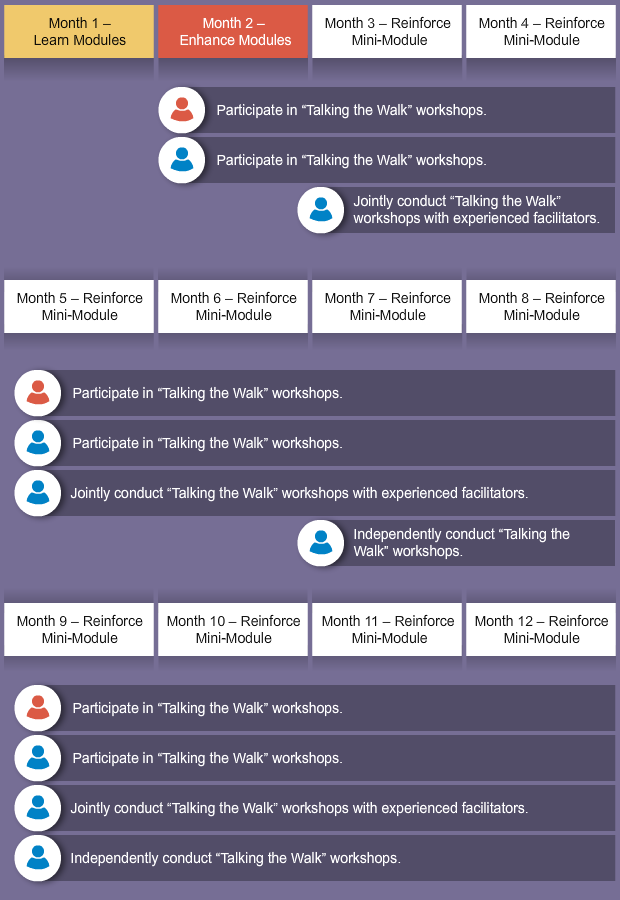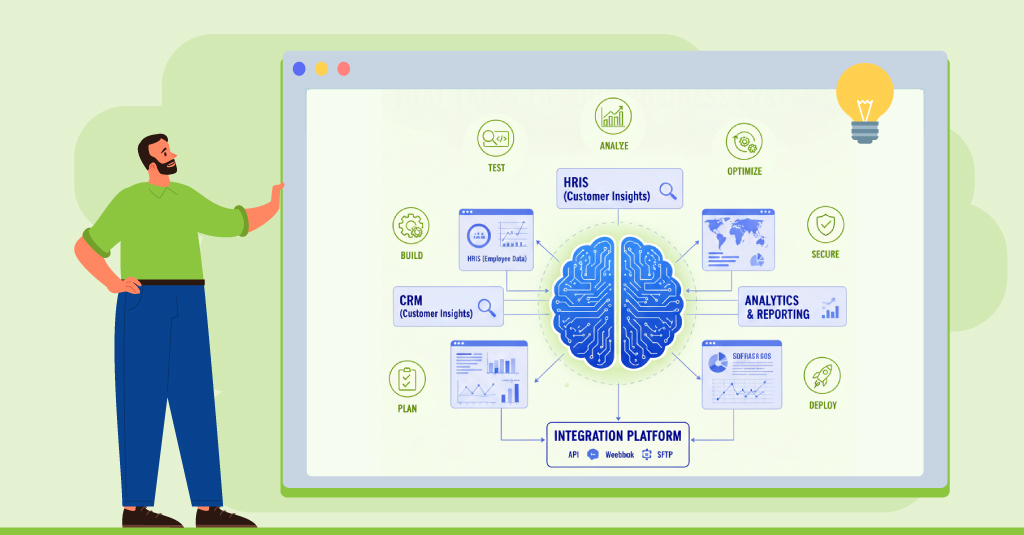Any major organisational change, whether it is to product/ service offerings, customer experience, internal processes, corporate strategy or company structure, happens over a span of time with impact to several roles. And major change comes with its own complexity and needs: communication, coordination, re-skilling, up-skilling, acceptance, management, etc.

It’s also a reality that change takes time to implement, whether from the perspective of working out the details in practice or carrying people along in the desired direction and addressing concerns, resistance and challenges. Even if people are enthused about the change, it takes time to realistically become change-ready and be able to function in new ways.
For these reasons, change is tricky and must be properly supported by robust training and development plans. Here’s how we went about helping a client of ours deal with a huge organisational level change.
Background
One of our clients, among the world’s largest food manufacturing organisations, wanted to strengthen adherence to its Code of Conduct. As an organisation, this company prides itself on its ethical sourcing and civic sense. It not only adheres to regulatory bodies’ norms, it is also looked to by the same regulatory bodies as an industry leader to help even define these norms.
It was therefore necessary from a corporate identity and reputational standpoint that employees truly understand, apply and abide by the Code of Conduct.
Solution Proposed
A Code of Conduct requires the most personal and organisational level of involvement and cooperation. People not only must know the organisation’s stance in policy, but they must be able to ‘see’ things through the same philosophy and lens to be able to respond in the spirit of the organisational code to various real life situations. At times, this could mean overriding personal ways of doing things to comply with the organisational ways.
We consider this impossible to achieve with a mere one-off theoretical exposition of what the organisation stands for. So we designed a training intervention to run over the course of a calendar year, with multi-phase interventions to provide scaffolding through a phased learning approach.
This is what the structure of the intervention looked like:

Even with such a long-running program (especially, in fact!) it is difficult to create continuous and constant involvement. There must be sustained learning over a period of time, across a range of experiences and competency levels.
Leveraging mobility in such a solution is what allows us to ensure that the training inventions are better integrated into the learner’s everyday life. The ability to deliver training for any duration, context and space, means that the materials are more readily available to trigger and generate deeper understanding. And because mobile devices are so ubiquitous, from feeling sporadic, the interventions start feeling immersive and linked. They are easily available as even conversational aids so that learners can truly engage – even over a coffee break – in a deep discussion of a topic or aspect of practice.
Gentle push reminders can prod people into awareness so that even if they don’t individually react to the stimulus, they still have the experience of immersion in an environment that is continually engaging with the subject.
Using This Solution Effectively
- The constant reminder and invitation to engage with the change can be double-edged. Is this a change that people will panic about or just one that they will need help adjusting themselves to? The dominant reaction you anticipate will matter!
- Changes are as closely tied with business competitive intelligence as they are with clear and informative communication about the change. With mobile devices and their ability to carry the details of the change outside the enterprise space, it may be good to consider in curriculum design which aspects need high security and which ones less so.
- Change management and behavioural alignment do not have to be restricted to a one-way flow of information from the organisation to the individual: polls and surveys are easily administered on mobile devices. Why not consider when what kind of poll would give a realistic pulse of receptivity to the change? That information could also be drawn on for the Training Needs Analysis and Change Management Plans from one phase to the next.
- For all that mobility may be leveraged, it may also be necessary and practical to create opportunities alongside for face-to-face sharing and resolution of concerns. Each level has to be convinced of the change to be willing to support the level below it in modifying behaviour.
To see more uses and contexts for immersive, phased learning, download our new eBook – Mobile Learning: Let’s Not Phone It In!
Note:- This article was published in the eLearning Industry site.

















